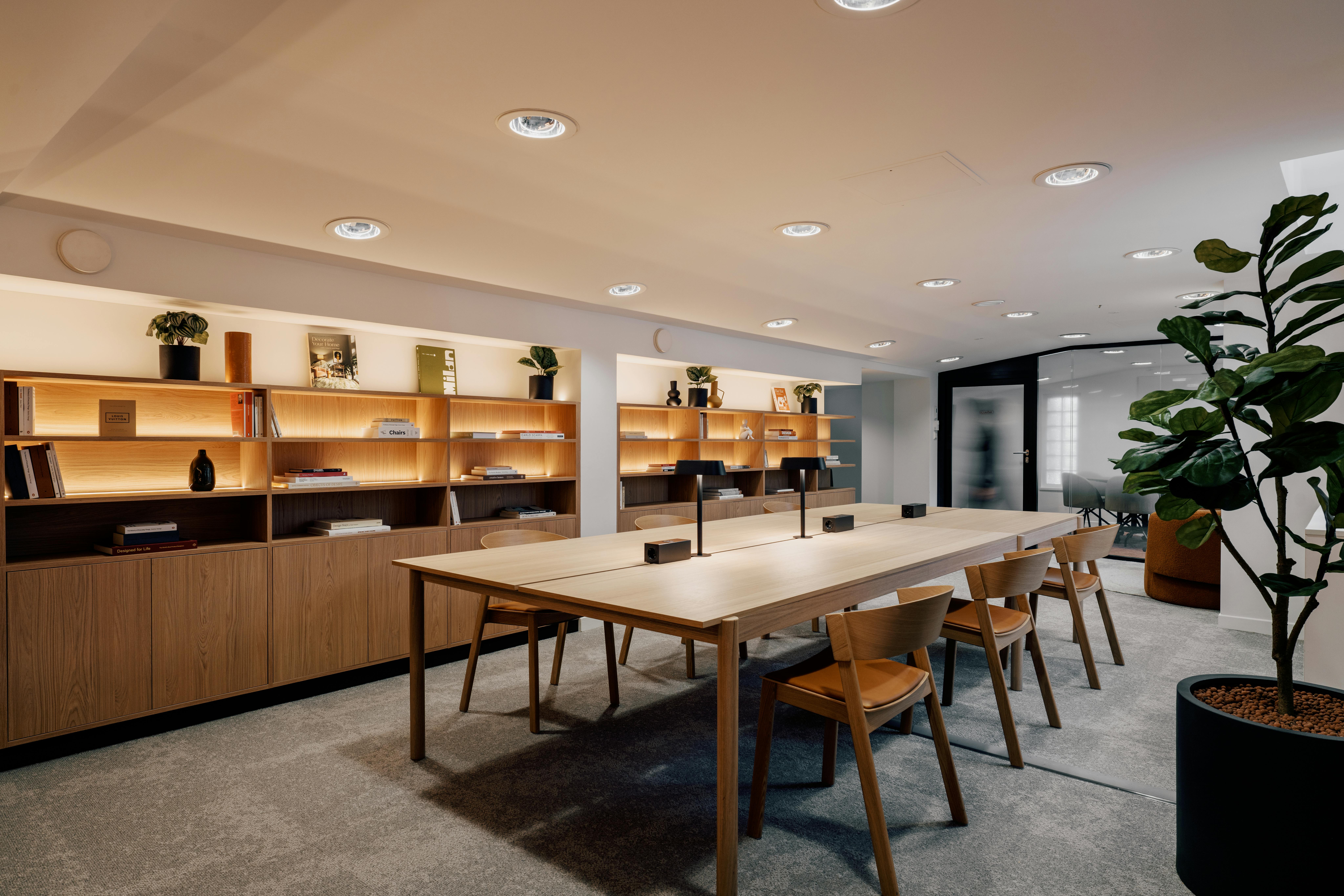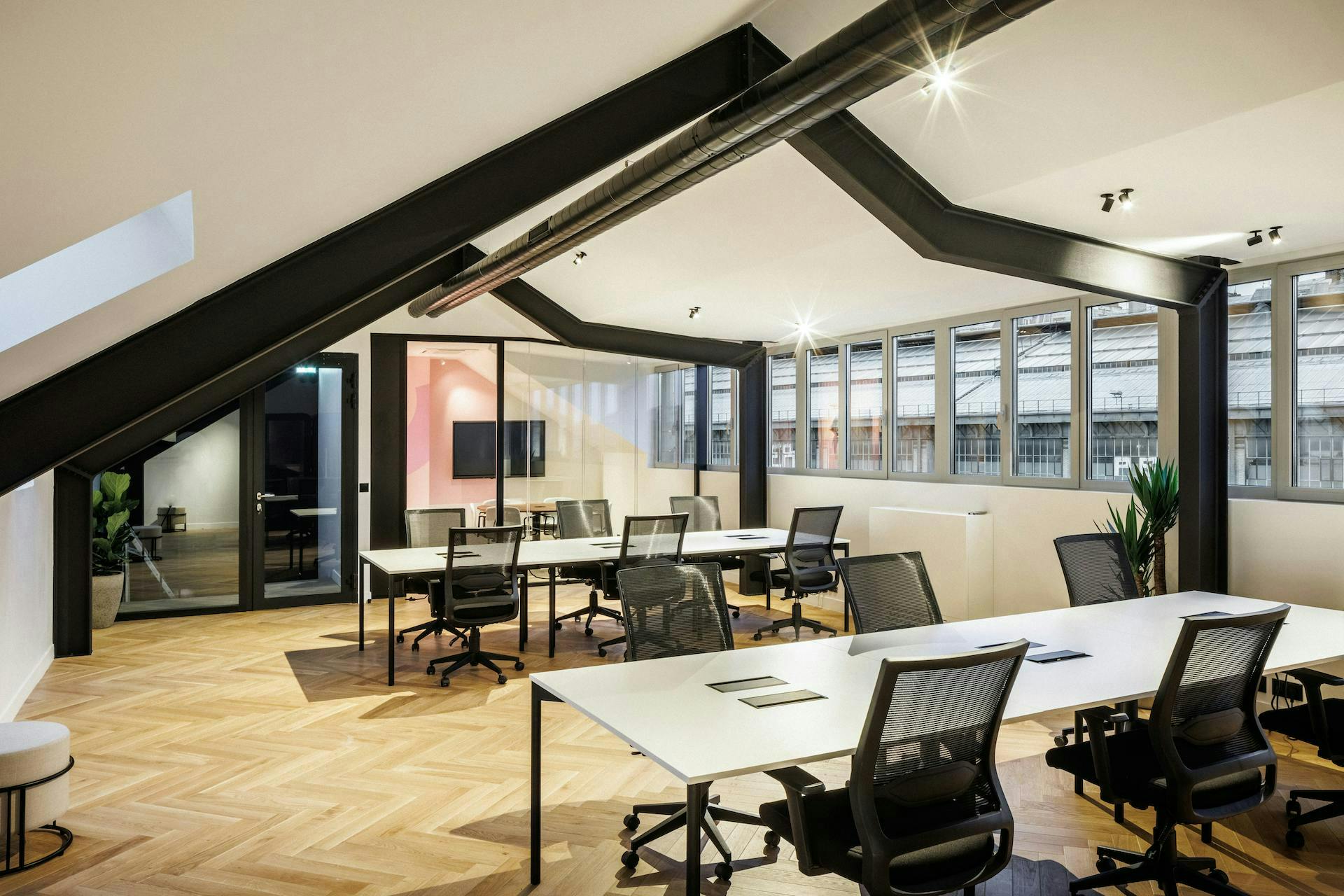

Why and how to create a company break room?
Imagine a space within your company where relaxation and rest are not only encouraged, but seen as a strategic lever for optimum performance. A corporate break room is much more than just a place to relax. It's the secret to a more creative, productive and cohesive team.
Let's take a look at the importance of the corporate break room, and some practical tips for its effective design.
Importance of a corporate break room
Implication on employee well-being
The installation of a rest room within a company represents a crucial element in employee well-being and the quality of working life. This space offers a salutary break, enabling employees to relax, recharge their batteries and reduce the stress accumulated during working hours. An effective break in a dedicated environment promotes concentration and improves employees' mental and physical health. This in turn helps to create a healthier, more balanced working atmosphere.
Enhancing conviviality
A break room can promote a convivial atmosphere within a company, for a variety of reasons:
- Encourages informal interaction between colleagues: By providing a dedicated space, the break room encourages spontaneous get-togethers where employees can chat casually, forge personal bonds and strengthen their relationships outside the strictly professional setting. This relaxed atmosphere facilitates informal exchanges and creates a more convivial working environment.
- Reinforces the sense of belonging to the company: A well-appointed break room demonstrates the company's concern for its employees' well-being. By offering a specific place to relax, it strengthens employees' emotional bond with their workplace, cultivating a sense of loyalty and belonging to the company.
- Offers the possibility of organizing team-building activities: these include games, discussions on non-work-related subjects or moments of collective relaxation. They reinforce cohesion between colleagues and thus create a stronger, more cooperative group dynamic.
Optimizing employee performance
The presence of a well-equipped break room has a direct impact on employee performance. For example, offering a space conducive to relaxation equipped with comfortable seating, relaxing corners and eating facilities can encourage employees to take regular breaks. When they return to their work tasks after a break, employees can find increased concentration and renewed energy, improving their productivity.
A well-designed break room not only boosts productivity, but also creativity. During a moment of relaxation, employees have the opportunity to free their minds from the constraints of work. This can encourage innovative ideas and creative approaches to solving work-related problems.
Let's not overlook the fact that a break room can help reduce absenteeism. By offering employees an environment where they can relax and recharge their batteries, the company can see a reduction in sick leave and mental health leave. Employees feel more motivated to come to work in an environment that values their well-being, which also reduces staff turnover.
Rest room : Law and obligations
Legal obligations
According to the French Labor Code (article L3121-33), an employee is entitled to a minimum break of 20 minutes after six hours of daily work. This duration can be extended by a company agreement.
Although French law imposes this break, legal obligations concerning the break room are less clear-cut.
It is established that a company is obliged to set up a kitchen if employees so request. This space can serve as a dedicated break area. However, the layout of this room depends on the number of employees in the company:
- For a company with fewer than 25 employees, a catering area complying with health and safety standards must be provided.
- For companies with 25 or more employees, this room must be equipped with a table, chairs, refrigerator, microwave and drinking water.
However, the French Labor Code does not specifically require the installation of a rest room. There is no legal obligation to provide a space where employees can relax and unwind.
However, despite this lack of legal constraint and as mentioned above, the benefits of this break for employee well-being are increasingly recognized, and the creation of a dedicated break space is becoming more widespread within companies.
What to do in the absence of a break room
Legislation or not, offering employees a space to relax and exchange ideas in an informal and convivial way remains beneficial to their well-being.
In the absence of a rest room, employers must therefore look for alternatives to meet their employees' need for rest. This could include setting up temporary rest areas, such as corners furnished with comfortable armchairs, or quiet spaces equipped with relaxation equipment such as cushions or yoga mats. Or the use of multifunctional spaces as relaxation areas.
Tips for designing a break room
Choosing the right location
Choosing the right location for your break room is important to guarantee its effectiveness. Opt for a place that's quiet and isolated from work areas, so that employees can relax without being disturbed. Ideally, the break room should be easily accessible for all employees, but far enough away to guarantee the peace and quiet needed for relaxation.
Provide the right equipment
Rest room equipment must be thought out to ensure employee comfort. Soft seating, tables or spaces to place drinks or snacks, relaxation equipment such as sofas or ergonomic armchairs, as well as facilities for food and refreshments, will help create an environment conducive to rest and relaxation.
Include employee feedback
Involving employees in the rest room design process is essential. Organize surveys or meetings to gather their suggestions and needs. Take into account their preferences in terms of furniture, equipment and layout to create a space that truly meets their expectations and promotes their well-being at work.
Propose regular events
Organizing regular entertainment in the break room can energize the work environment. Activities such as yoga sessions, meditation workshops, game sessions, cooking classes or themed events help to diversify employees' breaks.
Furnishing on a budget
Creating a corporate relaxation space on a limited budget is entirely achievable with some simple adjustments. Opt for soft lighting and bright hues in a corner equipped with a coffee machine, fruit baskets and comfortable armchairs. Incorporate plants and recycle furniture to create a pleasant, relaxing environment for employees.
20 inspiring ideas for designing a break room
Discover our ideas to design a functional and friendly corporate break room for a relaxing break away from the office.
- Comfortable relaxation area: Install sofas, relaxing armchairs and cushions.
- Leisure zone: Incorporate board games, table soccer or table tennis.
- Zen zone: Set up a meditation area with rugs and cushions.
- Reading corner: Shelves with a selection of books and magazines.
- Dining area: Provide a small kitchen equipped with fridge, microwave and coffee maker.
- Natural elements: Incorporate plants to add a touch of greenery and freshness.
- Appropriate lighting: Choose soft, adjustable lighting to create a relaxing atmosphere.
- Interactive wall: Install a magnetic board or wall to display inspirational messages or upcoming activities.
- Soothing music: Install a sound system to play relaxing music.
- Napping corner: Arrange mattresses or hammocks to provide additional resting space.
- Entertainment elements: Add a games console, puzzles or musical instruments to promote relaxation.
- Fitness corner: Incorporate simple equipment for light exercise, such as yoga mats or dumbbells.
- Personalized decoration: Encourage employees to bring in decorative elements to personalize the space.
- Events board: Post a calendar with entertainment, upcoming parties and special events.
- Relaxing outdoor area: If possible, create an outdoor area with chairs or benches to enjoy the fresh air.
- Creative space: Provide supplies for artistic or creative activities, such as drawing or painting.
- Feedback system: Set up a suggestion box to collect employees' opinions and ideas.
- Information area: Set up a corner with brochures on well-being, mental health and other relevant topics.
- Personal development workshops: Organize personal or professional development sessions, such as stress management or time management courses.
- Encourage conviviality: Create a space for informal moments, such as coffee breaks or group lunches.

Contact Us
We find your Perfect fit!

